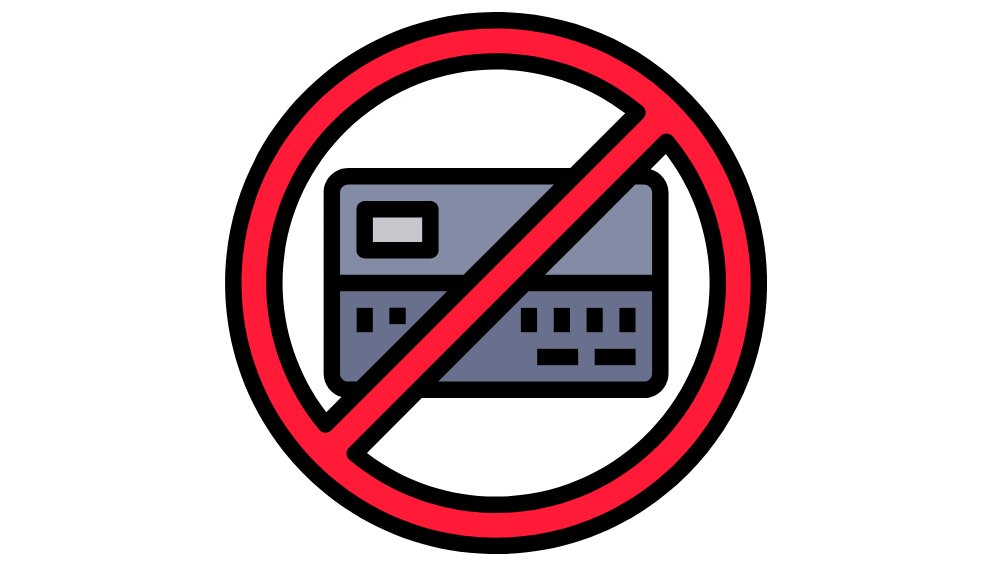In today’s digital age, credit card transactions have become a cornerstone of e-commerce and retail sales. However, as businesses strive to protect themselves and their customers from fraud, they often face a perplexing issue: false declines. These occurrences, where legitimate transactions are denied without evidence of fraud, can lead to significant challenges for merchants and customers. This article delves into the nature of false declines, their underlying causes, their impact on the industry, and effective strategies businesses can implement to minimize their occurrence.
What Is a False Decline?
A false decline occurs when a credit card processing system rejects a legitimate transaction, usually due to fraud detection mechanisms flagging it incorrectly. This means that a customer with valid credentials cannot complete a purchase simply because their transaction is deemed suspicious, even when it is not. According to Javelin Strategy & Research, false declines cost merchants an estimated $118 billion annually in lost revenue—an alarming figure that underscores the financial repercussions of these occurrences.
The Scope of the Problem
The problem of false declines is not isolated to a few transactions; rather, it represents a systemic issue affecting a substantial portion of online sales. The Merchant Risk Council’s Global Fraud Survey reveals that 2.6% of orders in online stores are declined due to fraud suspicions. Interestingly, the likelihood of false declines rises proportionally with the purchase price, meaning higher-ticket items are more prone to being flagged as fraudulent.
The imbalance between false declines and actual fraud is staggering. A 2014 study from Javelin highlighted that the cost of false declines in the U.S. was nearly 13 times that of actual fraud, with only $9 billion attributed to genuine fraud cases. This discrepancy raises crucial questions about the efficacy of fraud prevention measures and the resulting impact on the consumer experience.
Causes of False Declines
Understanding why false declines occur is essential for businesses looking to mitigate their impact. Here are several common reasons:
1. Overzealous Fraud Prevention Measures
While fraud detection systems are critical for protecting against credit card fraud, they can sometimes be excessively stringent. These systems use algorithms and machine learning models to analyze transaction patterns and customer behavior, which can lead to genuine transactions being wrongly classified as fraudulent.
2. Technical Issues
Technical glitches within payment processing systems can also lead to false declines. For instance, communication failures between a merchant’s payment processor and the card issuer’s authorization system can result in declined transactions without any legitimate reason.
3. Human Error
Mistakes made during the checkout process can lead to false declines. Simple typos in credit card numbers, incorrect expiration dates, or invalid CVV codes can cause legitimate transactions to be rejected. Moreover, errors made by merchants, such as incorrect transaction coding, can also contribute to this issue.
4. Risk Thresholds and Decline Rules
Payment processors and card issuers set specific risk thresholds and rules to automatically block transactions that meet certain criteria, such as exceeding a specific purchase amount or originating from high-risk regions. Unfortunately, these automated systems can lead to false declines when they inadvertently flag legitimate transactions.
5. Account Limitations
Card issuers may impose account limitations for various reasons, such as excessive spending or frequent chargebacks. These limitations can lead to legitimate transactions being falsely declined.
6. Data Mismatch
A mismatch between a customer’s billing information and the data on file with the card issuer can raise red flags. For instance, if a customer has recently changed their address but has not updated their billing information, the transaction may be flagged as potentially fraudulent.
7. Expired or Canceled Cards
If a customer attempts to use an expired or canceled card, the transaction will be declined regardless of the legitimacy of the purchase.
Types of False Declines
To effectively address false declines, it’s vital to distinguish between two main types: soft declines and hard declines.
Soft Declines
Soft declines occur when a transaction is temporarily declined, but the issue can potentially be resolved. Common causes include insufficient funds or exceeding a credit limit. In many cases, the customer or merchant can take immediate action to rectify the problem and complete the transaction.
Addressing Soft Declines
Merchants should promptly inform customers of soft declines and provide clear guidance on resolving the issue. Streamlining communication during this process can help maintain a positive customer experience.
Hard Declines
Hard declines indicate that the transaction has been permanently declined, often due to fraud suspicions or incorrect payment information. Customers faced with a hard decline will typically need to utilize an alternative payment method.
Addressing Hard Declines
In the case of hard declines, merchants must inform customers of the problem and suggest alternative payment methods. Sometimes, customers may need to contact their card issuer to resolve the issue.
Impact of False Declines on Merchants
The repercussions of false declines extend beyond immediate lost sales, significantly affecting various aspects of a merchant’s operations.
1. Lost Revenue
When legitimate transactions are declined, merchants forfeit potential sales. Customers encountering payment issues are likelier to abandon their purchases, leading to revenue losses. If customers regularly experience declines, they may turn to competitors that offer a smoother payment experience.
2. Increased Operational Costs
Handling false declines can escalate operational costs for businesses. Merchants may need to invest in additional customer service resources or sophisticated fraud detection tools to manage the increased volume of declined transactions.
3. Damaged Customer Relationships
Repeated false declines can frustrate customers, leading to dissatisfaction and potential erosion of trust in the merchant. Customers who consistently face payment problems may shop elsewhere, diminishing customer loyalty.
4. Negative Reviews and Reputation Damage
Customers who experience false declines are likely to leave negative reviews on social media or review platforms, damaging the merchant’s reputation. A tarnished image makes attracting new customers and maintaining a positive brand presence more challenging.
5. Increased Chargebacks
False declines can result in customers disputing transactions with their card issuer, leading to chargebacks. This contributes to lost revenue and can increase the merchant’s chargeback rate, which can strain relationships with payment processors and lead to heightened fees.
6. Lost Opportunities for Cross-Selling and Upselling
When customers abandon their carts due to false declines, merchants miss opportunities to promote additional products or services that could have further increased revenue.
7. Lower Conversion Rates
The overall sales performance of a merchant’s website can be adversely affected by false declines, contributing to lower conversion rates as frustrated customers abandon their shopping carts.
Impact of False Declines on Customers
False declines also significantly impact customers, affecting their shopping experience and overall satisfaction.
1. Frustration and Inconvenience
Customers may experience frustration when their transactions are declined, requiring them to seek alternative payment methods or resolve customer service issues.
2. Embarrassment
In physical retail environments, false declines can lead to embarrassment, especially when customers cannot complete their purchases in front of others.
3. Lost Time
Resolving false declines can be time-consuming for customers, as they may need to contact customer service or their card issuer to rectify the issue.
4. Reduced Trust in the Merchant
Repeated false declines can erode customer trust in the merchant’s ability to securely process payments, prompting them to seek alternative merchants in the future.
5. Negative Perception of the Brand
Customers who face false declines may develop a negative perception of the merchant’s brand, impacting their willingness to shop there again.
6. Reluctance to Use Credit Cards
Experiencing false declines may make customers hesitant to use credit cards for future transactions, leading them to seek alternative payment methods.
7. Abandoned Purchases
Ultimately, customers may abandon their purchases due to false declines, resulting in lost sales for the merchant and missed opportunities for the customer.
Strategies for Reducing False Declines
Given the detrimental effects of false declines, merchants must take proactive steps to minimize their occurrence and enhance customer satisfaction. Here are several strategies to consider:
1. Optimize Fraud Detection Tools
Review and optimize fraud detection tools to balance preventing fraud and allowing legitimate transactions. This may involve adjusting settings, customizing risk thresholds, and regularly monitoring performance.
2. Streamline the Checkout Process
Simplify the checkout process to reduce the likelihood of customer errors when entering payment information. Providing clear instructions, implementing auto-fill features, and offering multiple payment options can enhance the user experience.
3. Train Staff and Implement Best Practices
Educate staff on handling declined transactions effectively and establishing best practices for managing false declines. This includes developing a systematic approach for flagging and investigating potential false declines.
4. Use Address Verification Services (AVS)
Implementing an Address Verification Service can help confirm the customer’s billing address with the card issuer, preventing legitimate transactions from being declined due to address mismatches.
5. Keep Customer Data Updated
Maintaining accurate and up-to-date customer information is essential. Encourage customers to update their payment details when necessary and implement systems for tracking changes in customer data.
6. Monitor and Analyze Decline Patterns
Regularly monitoring transaction data to identify patterns and trends in false declines can help pinpoint areas needing improvement and inform fraud prevention strategies.
7. Communicate with Customers
Establish open communication with customers when a decline occurs. Inform them of the reason for the decline and guide how to resolve the issue, fostering a positive customer experience.
Conclusion
False declines in credit card processing represent a significant concern for merchants and customers. They can disrupt revenue flow, damage relationships, and affect brand reputation. By understanding the causes of false declines and implementing strategies to mitigate their occurrence, businesses can enhance the overall shopping experience, improve customer satisfaction, and foster long-term loyalty.










